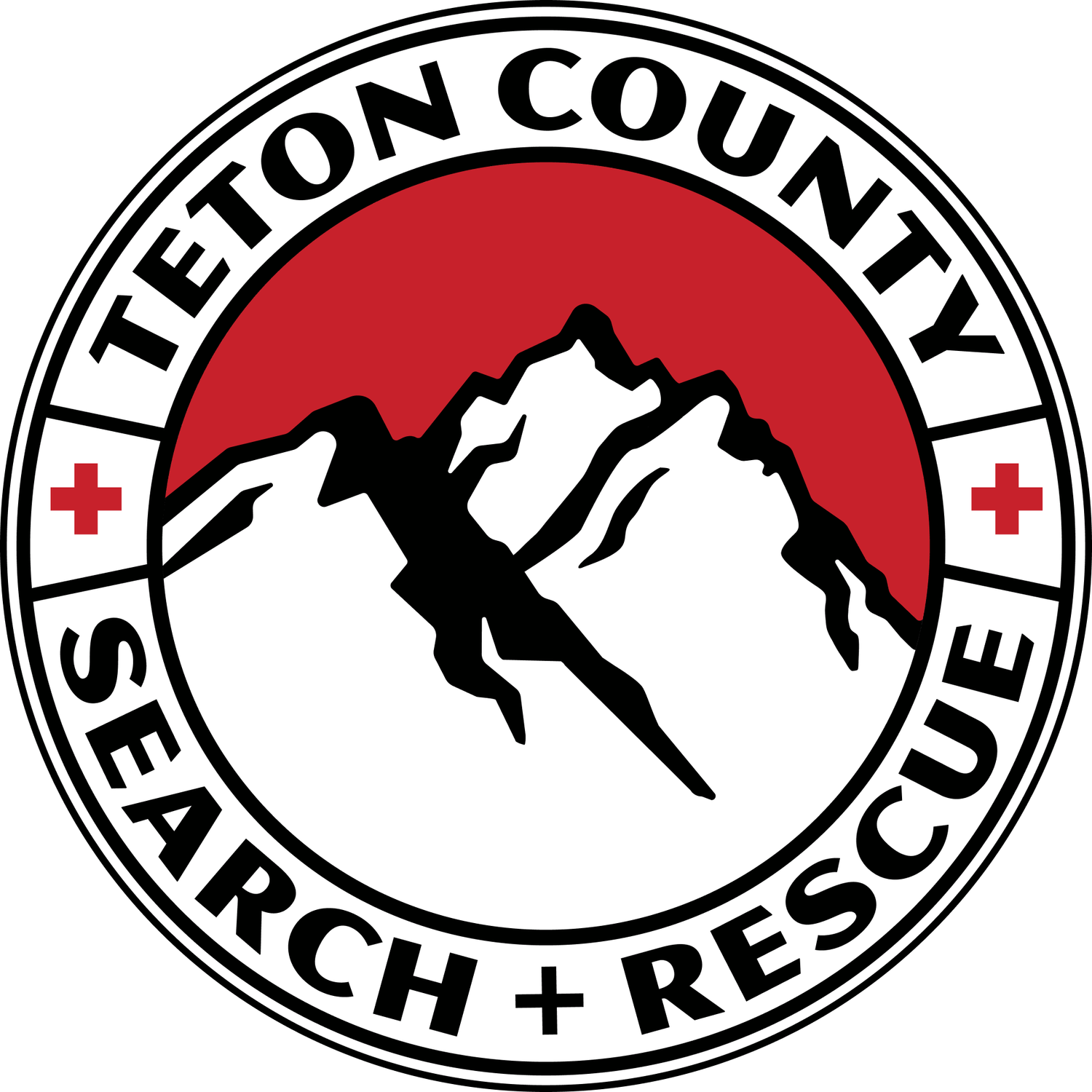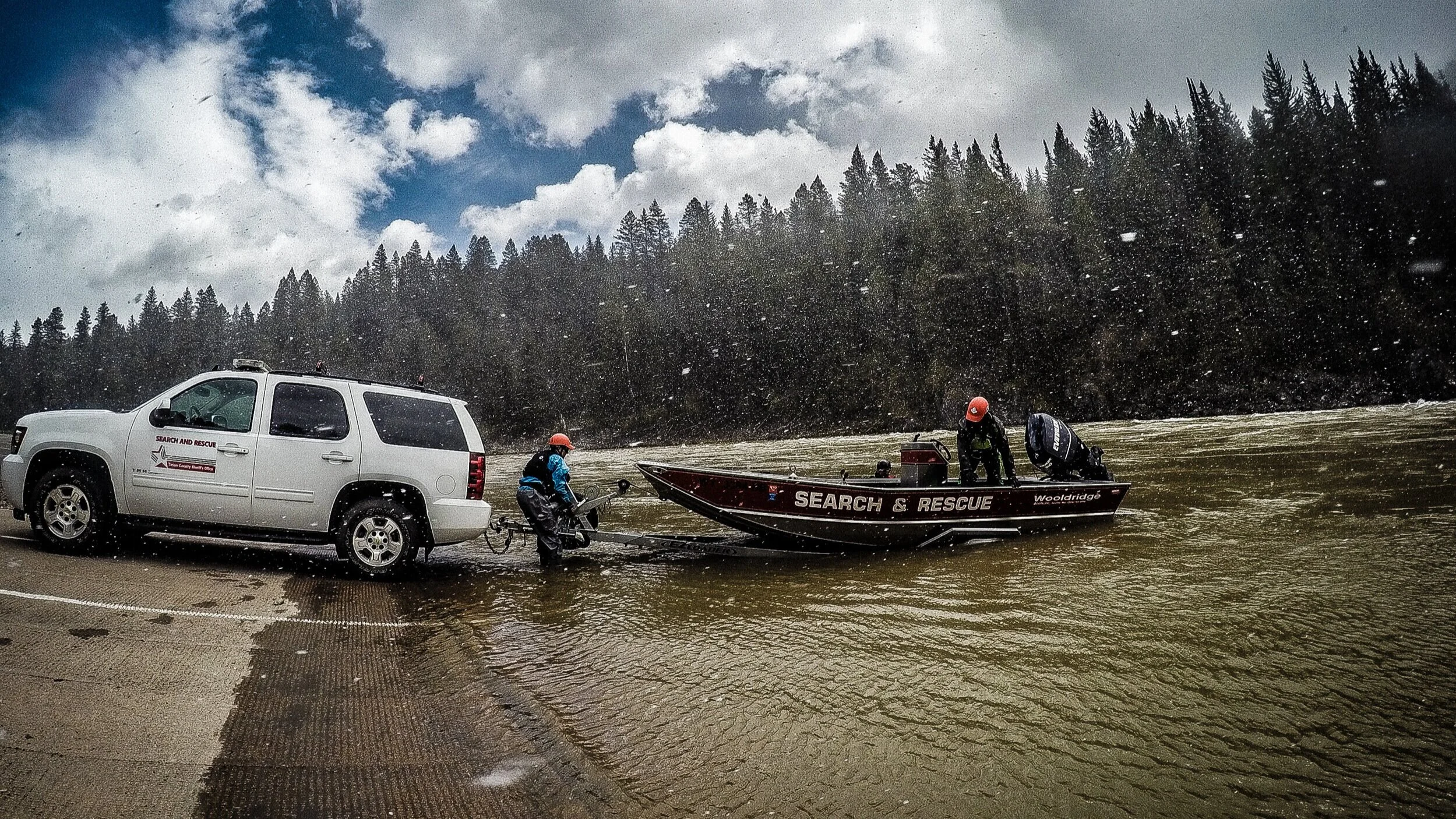At 3:56 p.m. on Tuesday, February 4, Teton County Search & Rescue was notified that a male snowmobiler was stuck in a drainage on the western slope of the Tetons. The local resident had motored a couple of miles into the Hill Creek area and was not able to get back out due to heavy, wet snow.
A TCSAR volunteer happened to be snowmobiling in the vicinity during his time off. He responded to help the man and subsequently informed incident command in Jackson that conditions were too dangerous for a ground response.
Teton County Search & Rescue complete a successful short-haul mission for a stranded snowmobiler just before dark on Tuesday, February 4. Photo: TCSAR
Opting for a helicopter rescue, TCSAR dispatched three short-haul members into the ship with the pilot. They flew to the scene and then successfully short-hauled the man out of the backcountry. The ship returned to base just minutes before ‘pumpkin hour,’ known as 30 minutes after sunset.
Pumpkin hour originates from Cinderella, and can mean a personal curfew or deadline. For aviation crews, it indicates when a helicopter can’t fly due to darkness.
During the mission debrief, TCSAR learned that the snowmobiler had attended the Moto Avalanche Safety Night on December 12 at the Virginian, where he said he learned to call 911 early if a situation arised. That he put in the call when he did gave TCSAR the extra bit of time to consider various options, along with the safety of the stranded snowmobiler and SAR volunteers. Our team was happy to help get this snowmobiler out of there before nightfall and weather complicated matters.





